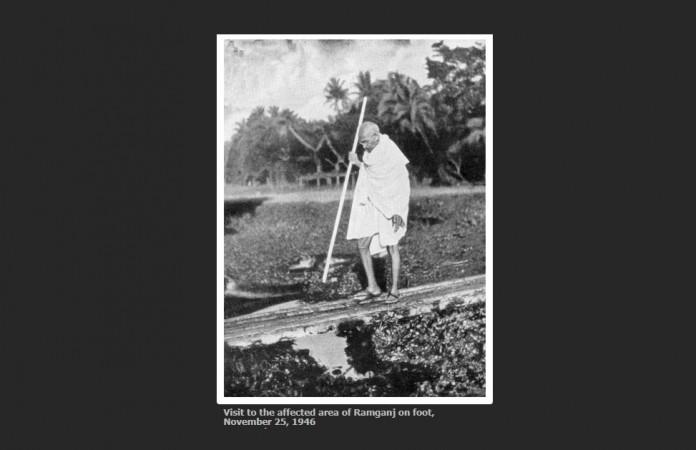
Mohandas Karamchand Gandhi, an eminent personality, a revered leader and the father of the nation, drew such immense admiration worldwide for his teachings of non-violence that his date of birth is observed as the 'International Day of Non-Violence'.
The revolutionary's philosophy and Satyagraha is now more relevant than ever, given the atmosphere of intolerance that is evidently prevalent.
On the occasion of Gandhi's 150th birth anniversary, let us take a look at some of the key events that shaped him to be the leader we know him as.
1893: Gandhi's travel to South Africa
Two years after coming back from London, Gandhi travelled to South Africa to take a position as a legal consultant for an Indian trading and shipping company.
His time there was crucial as the gross inequality and discrimination of the colonial society helped his political evolution and him more politically aware.
Gandhi was thrown off a train in South Africa for refusing to move from a first class seat to third class, although he held a valid first class ticket. This experience gave Gandhi the resolve to fight racial discrimination.
He then worked with other Indian Indian-rights activists in South Africa in 1894, to create the Natal Indian Congress, an organization committed to giving Indians a collective voice in South African politics.
1906: Gandhi organised his first Satyagraha
A peaceful protest was organised by the father of the nation to protest the Transvaal Asiatic Amendments Act — a law that required the registration and fingerprinting of all Indians living in the Transvaal.
Gandhi continued to protest until 1911, when this act, known as the "Black Act" was repealed.

1914: Gandhi decides to return to India
When Gandhi returned to India, sailing into Bombay, he was welcomed as a hero. The stories of his fight for Indian equality had spread through the country.
Wanting to familiarise himself with the problems of Indian society, Gandhi spent most of his time travelling throughout the country by train. He was convinced that the country needed social and political reform after he saw the widespread poverty and famine that was prevailing.
He established the Satyagraha Ashram at Kochrab, Gujarat Province's Ahmedabad. The ashram was a spiritual retreat for his followers, even the "untouchables". This move shocked most of the Hindu community.

1930: The Dandi march
In protest of the Salt Act (1882), which forbade Indians from making their own salt, Gandhi led a 200-mile march from his ashram in Ahmedabad to the coastal town of Dandi.
After arriving at Dandi, Gandhi picked up a piece of natural, unprocessed salt from the shore, thereby violating British law.
This march inspired Indians across the country to organise peaceful and non-violent protests/disobedience movements.
British authorities arrested more than one hundred thousand protesters, including Gandhi, but were forced to release him and other Indian leaders to negotiate an end to the protests.
1942: Quit India movement, nationwide Satyagraha
The Indian National Congress passed a resolution called the "Quit India", demanding that the British recognize Indian independence.
In support of the resolution, Gandhi launched his last nationwide satyagraha campaign. Along with other Indian leaders, Gandhi was arrested and imprisoned until 1944.
He started a hunger strike in 1973.


![Too drunk to walk? Karnataka to drop heavily intoxicated revellers home, sets up rest centres for New Year crowds [Watch] Too drunk to walk? Karnataka to drop heavily intoxicated revellers home, sets up rest centres for New Year crowds [Watch]](https://data1.ibtimes.co.in/en/full/826552/too-drunk-walk-karnataka-drop-heavily-intoxicated-revellers-home-sets-rest-centres-new-year.png?w=220&h=135&l=50&t=40)








![Too drunk to walk? Karnataka to drop heavily intoxicated revellers home, sets up rest centres for New Year crowds [Watch]](https://data1.ibtimes.co.in/en/full/826552/too-drunk-walk-karnataka-drop-heavily-intoxicated-revellers-home-sets-rest-centres-new-year.png?w=220&h=138)
![Too drunk to walk? Karnataka to drop heavily intoxicated revellers home, sets up rest centres for New Year crowds [Watch]](https://data1.ibtimes.co.in/en/full/826552/too-drunk-walk-karnataka-drop-heavily-intoxicated-revellers-home-sets-rest-centres-new-year.png?w=220&h=135)


